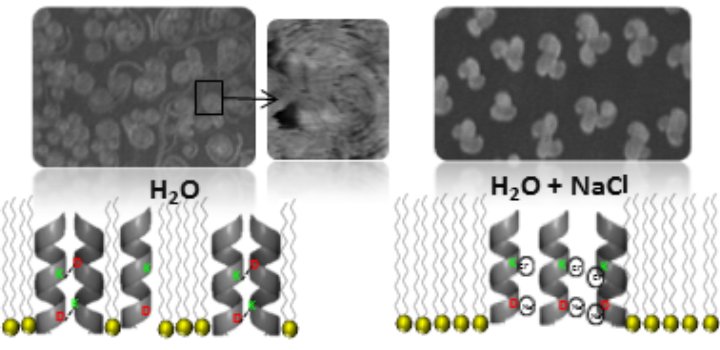Alvares DS et al. 2016, Biochim Biophys Acta
Polybia-MP1 (IDWKKLLDAAKQIL-NH 2), extracted from the Brazilian wasp Polybia paulista, exhibits a broad-spectrum bactericidal activity without being hemolytic and cytotoxic. In the present study, we analyzed the surface properties of the peptide and its interaction with DPPC in Langmuir monolayers. Polybia-MP1 formed stable monolayers, with lateral areas and surface potential values suggesting a mostly α-helical structure oriented near perpendicular to the membrane plane. In DPPC-peptide mixed monolayers, MP1 co-crystallized with the lipid forming branched domains only when the subphase was pure water. On subphases with high salt concentrations or at acidic or basic conditions, the peptide formed less densely packed films and was excluded from the domains, indicating the presence of attractive electrostatic interactions between peptides, which allow them to get closer to each other and to interact with DPPC probably as a consequence of a particular peptide arrangement. The residues responsible of the peptide-peptide attraction are suggested to be the anionic aspartic acids and the cationic lysines, which form a salt bridge, leading to oriented interactions in the crystal and thereby to branched domains. For this peptide, the balance between total attractive and repulsive interactions may be finely tuned by the aqueous ionic strength and pH, and since this effect is related with lysines and aspartic acids, similar effects may also occur in other peptides containing these residues in their sequences.
Authors: Alvares DS, Fanani ML, Ruggiero Neto J, N Wilke
Article: Alvares DS et al. Biochim Biophys Acta. 2016 Feb;1858(2):393-402.



